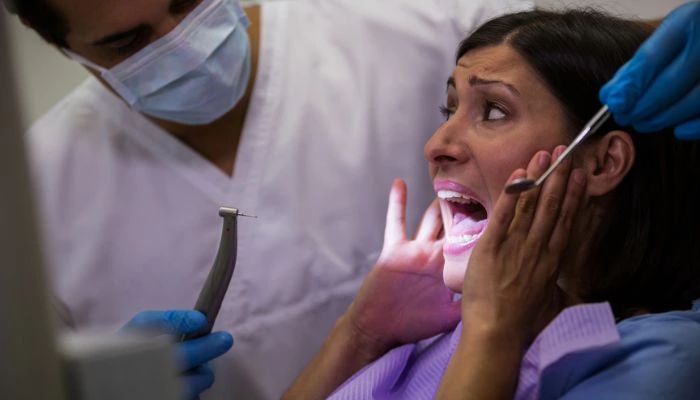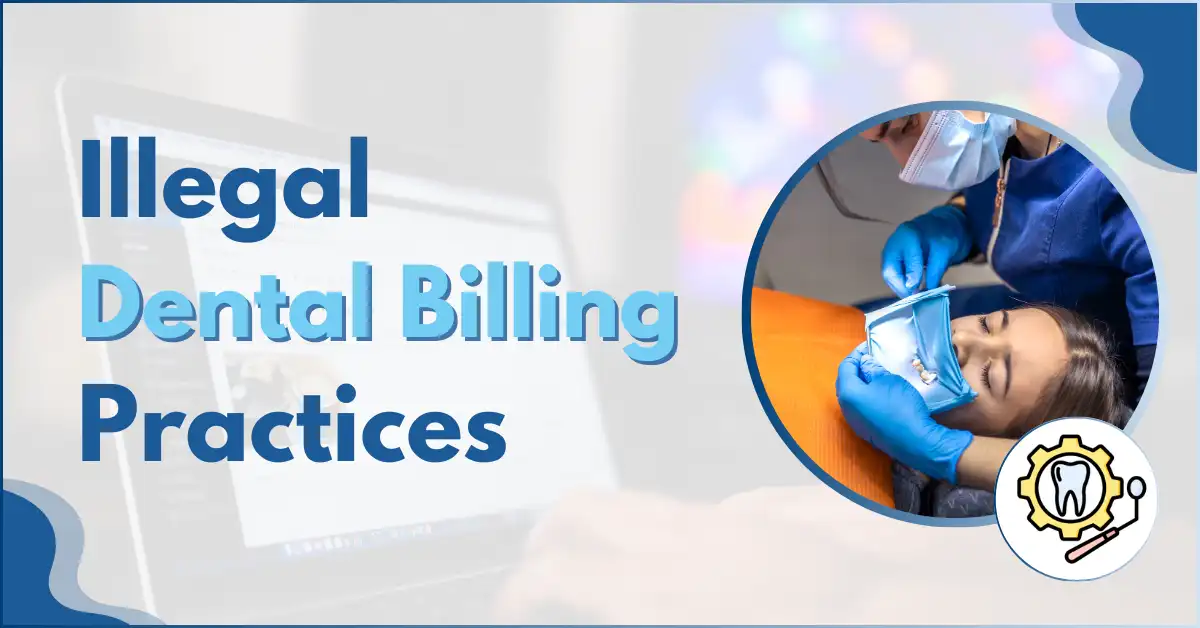Every year, billions of dollars are lost because of fraud in healthcare, including dental care. Many dentists are honest and only want to help their patients
But sometimes, a few billing mistakes can happen without bad intentions, and these can still count as illegal dental billing practices.
That’s why it’s important for dental offices to understand what can go wrong and how to avoid it.
So, I have compiled this blog to help you understand the common illegal or unethical billing mistakes, why they can cause you trouble, and how you can avoid them.
14 Illegal Dental Billing Practices

Let’s discuss what are unfair dental billing practice in detail:
1. Waiving Deductibles or Copayments
Sometimes you might want to help a patient by not charging their copay or deductible. It might feel like a kind gesture, but insurance sees it as fraud. The insurance company thinks the patient paid, so your claim looks bigger than it really is.
How you can avoid this: Always collect the patient’s deductible or copay. If they really cannot pay, set up a formal payment plan or an official discount program. Never secretly waive fees.
2. Billing for Services Not Rendered
This is when you charge insurance for a treatment you never did. It is one of the clearest forms of fraud. Patients may also notice treatments they never received, which can ruin their trust in you.
How you can avoid this: Only bill for treatments you actually provide. Keep clear notes, photos, X-rays, or other evidence to show the treatment was done. Submit claims only after the treatment is completed.
3. Unbundling
Some dental procedures include multiple small services. Unbundling is when you bill each part separately to get more money. This is dishonest and considered illegal.
How you can avoid this: Follow the correct ADA and insurance coding rules. Bill using the comprehensive code, not separate smaller codes. Train your staff to recognize bundled procedures.
4. Upcoding
Upcoding is when you bill for a bigger or more expensive procedure than what you did. For example, charging for a surgical extraction when you did a simple extraction. This can lead to overpayment and insurance audits.
How you can avoid this: Always bill for the treatment you actually performed. Use your chart notes, X-rays, and diagnostic records to support every claim. Do regular audits to ensure coding matches treatment.
5. Altering Dates of Service

Changing the date of treatment to fit insurance coverage is illegal. It can also create confusion in patient records.
How you can avoid this: Always report the real date of treatment. If the treatment takes multiple visits, document each date clearly. Never change dates to match insurance coverage or benefits.
6. Misrepresentation of Procedures
This happens when you report a treatment under a different code to get insurance approval or more money. For example, marking a cosmetic procedure as medically necessary. This is fraud and can lead to fines or loss of your license.
How you can avoid this: Always use the correct procedure codes and descriptions. Never substitute one code for another to get coverage. Train your staff in honesty and compliance.
7. Double Billing
Double billing is when you charge twice for the same procedure. This can happen by sending the same claim to multiple insurers or resubmitting it as if it were new. This is illegal and can trigger investigations.
How you can avoid this: Check your billing records carefully to make sure you never submit the same claim twice. Use software that detects duplicates. Assign a team member to review all claims before submission.
8. Altering Claim Forms
Changing patient information, procedure codes, or other details on claim forms to get payment is fraud. Even small alterations are illegal.
How you can avoid this: Never change a claim after submission unless it’s an official correction. Restrict access to claim forms to trained staff only. Use official resubmission processes if you need to fix errors.
9. Failure to Verify Insurance Eligibility
Not checking if a patient’s insurance is active or covers a procedure can lead to rejected claims. It can also be seen as negligence or fraud.
How you can avoid this: Always check insurance coverage before treatment. Use online verification tools or call the insurance company. Keep proof in patient records.
10. Incorrectly Listing the Treating Dentist
Submitting claims under a dentist who did not perform the treatment is unethical. Sometimes people do this to get coverage because one dentist is in-network. This can lead to serious consequences.
How you can avoid this: Always list the dentist who performed the treatment. Keep detailed notes signed by the treating dentist. Review claims regularly for accuracy.
11. Submitting Inflated or False Insurance Claims
Exaggerating costs, time, or materials is illegal. It misleads insurance companies and can cause fines, audits, or criminal charges.
How you can avoid this: Only bill for treatments that were necessary and actually performed. Keep supporting documents like X-rays, lab slips, or progress notes. Conduct internal audits to catch errors.
12. Diagnosing Unnecessary or Incorrect Treatment

Recommending or billing for treatment a patient doesn’t need is both unethical and fraudulent. It can harm patients financially and damage trust.
How you can avoid this: Always base your diagnosis on clinical evidence. Use X-rays, cameras, or second opinions when needed. Put patient health first, not financial gain.
13. Medical Identity Theft
Using someone else’s insurance or identity to bill for treatment is a crime. It can harm the patient and your practice.
How you can avoid this: Check patient ID and insurance carefully. Train staff to spot suspicious activity. Keep patient information safe and secure.
14. Misrepresenting Diagnoses
Falsifying a diagnosis to get insurance coverage is fraud. For example, marking a cosmetic crown as medically necessary.
How you can avoid this: Always record the real diagnosis. Use clinical evidence to support it. Conduct peer reviews to check accuracy. Never exaggerate to get coverage.
Consequences of Improper Billing
Wrong billing can cause more than money problems:
How to Practice Proper Dental Billing

To keep your practice safe and honest:
Dental Billing Do’s and Don’ts
| Do’s | Don’ts |
| Collect copays and deductibles honestly | Waive copays secretly |
| Use the correct procedure codes | Split bundled services |
| Give accurate cost estimates | Change treatment dates |
| Keep full treatment records | Submit claims for treatments not done |
| Be transparent with patients and insurers | Pay for patient referrals |
Final Takeaway
Even small billing mistakes can hurt your patients, increase insurance costs, and put your practice at risk. By avoiding these illegal dental billing practices , you can grow your dental practice, build trust, and stay safe legally and financially







